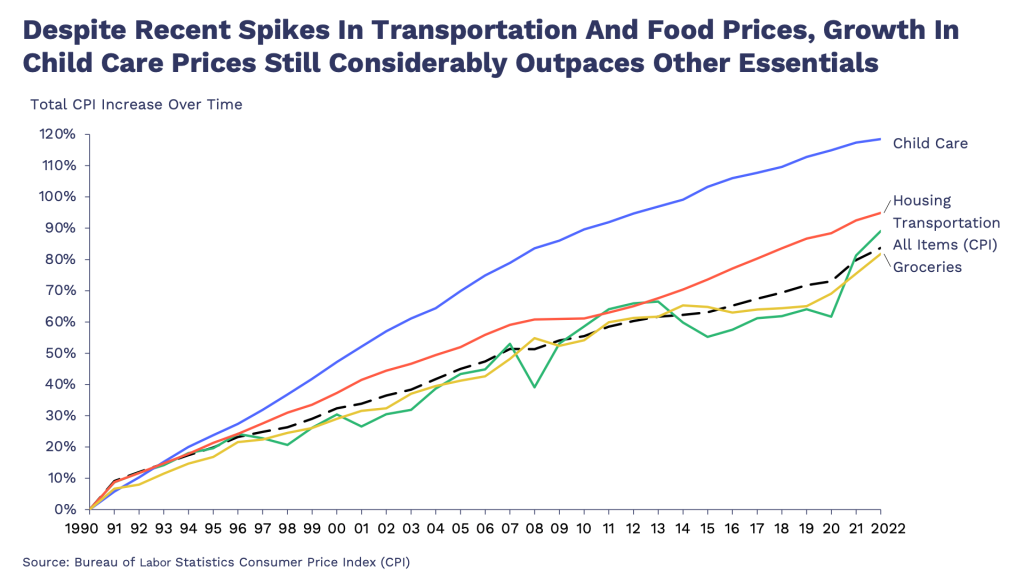Chapter 5 Cost trends
Q: compare the US trends in childcare costs and the salaries of women in the remunerated workforce, adjusted for inflation
R: According to recent data, childcare costs in the United States have been rising at a rate that outpaces inflation[1]. This trend of annual increases has been ongoing for several decades and has reached a point where prices are untenable for many families[2][3]. For example, the cost of childcare for a 4-year-old is reported to be $5,184 per year or $432 per month[4].
Meanwhile, women’s salaries in the remunerated workforce, when adjusted for inflation, have seen some increase over the past few decades, but not enough to keep up with the rising cost of childcare. According to the U.S. Bureau of Labor Statistics, the median usual weekly earnings of full-time wage and salary women workers were $857 in 2020, compared to $669 in 2000 (in constant 1982-1984 dollars). This represents an increase of about 28% over two decades[5].
However, it’s important to note that this increase in women’s earnings does not necessarily translate to an increased ability to afford childcare, especially given the faster pace of childcare cost increases. The rising costs are making it difficult for many families to manage without policy interventions[6].
In conclusion, while women’s salaries in the workforce have seen some growth when adjusted for inflation, the increasing costs of childcare present a significant financial challenge. This disparity underscores the need for policies that address childcare affordability.
Sources:
- 1: New Data Finds Child Care Prices Continue to Rise Ahead of Midterm Elections
- 2: New Childcare Data Shows Prices Are Untenable for Families
- 3: Child care remains out of financial reach for many families
- 4: Child care costs in the United States
- 5: Child care costs are going to rise, but policymakers can help U.S. families manage these increases
- 6: U.S. Bureau of Labor Statistics - Women in the labor force: a databook
